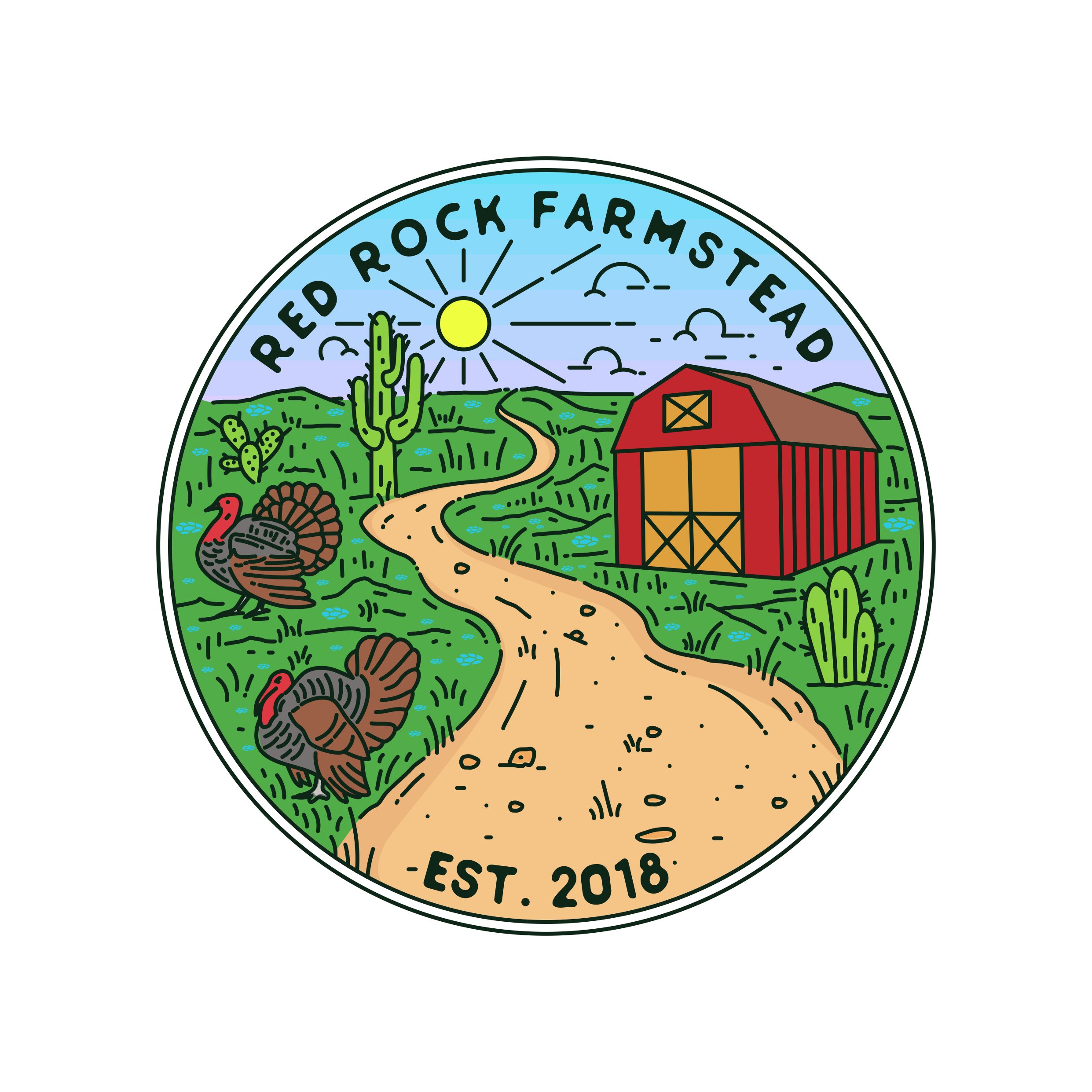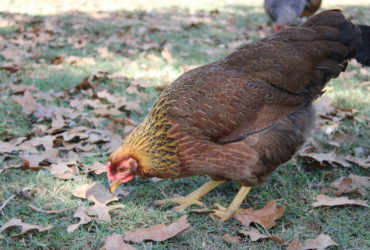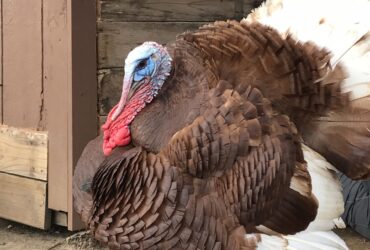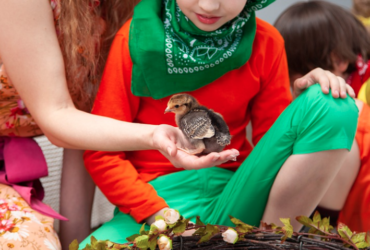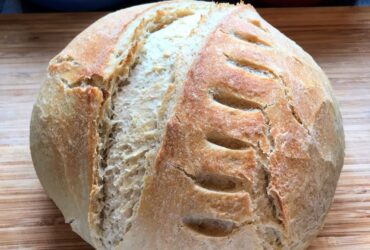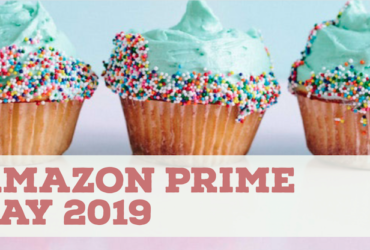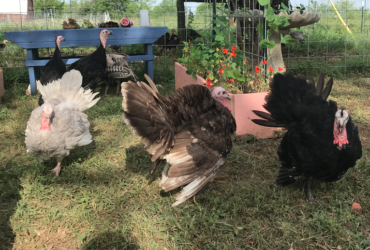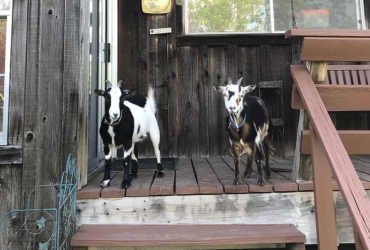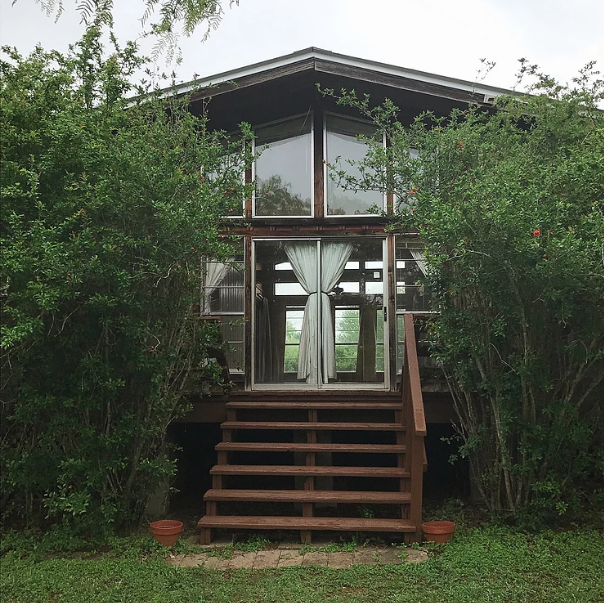
Stories, Tips + Tricks
How we bought a house in our 20’s! | USDA Loan Tips
Dusty and I moved to Austin TX in June 2017 from Southern CA. We weren’t sure if we were going to like it there, since I hadn’t even visited Austin before Dusty accepted a job offer. We were both at a point in our lives where we were ready to do something different, and felt that with each others support it would be an exciting time to try something new. We started searching for a rental and having lived in both apartments and houses before, we knew we wanted something with at least a small backyard where I could garden and keep our rabbit, Valentine.

Dusty moved in with a family friend in Austin for a brief period since he had to start working, while I was back in CA packing up our belongings. I came out for a long weekend to visit Dusty and do a preliminary rental home search to check out the different neighborhoods and areas of Austin. On my last night in Austin after a long day of visiting rental houses and frantically searching rental websites, a newly renovated house in a part of Austin we had both liked was posted, and we immediately texted our realtor who got us in to see the house that same evening. We were in a rental bidding war with another couple, but we got the house, signed the lease, and voila about a week later I was driving the 1500ish miles with my Dad, brother, and a Budget truck out to Texas to meet Dusty.
We loved our new rental house but pretty quickly realized that there were SO many affordable places in and around Austin, and we also pretty quickly realized that we loved it in Texas. At first, we drove around to some of the nearby towns and kind of joked around like, “Haha wouldn’t it be crazy if we bought a house!” But Dusty crunched the numbers and in some cases a mortgage would actually be cheaper than the rent we were paying.
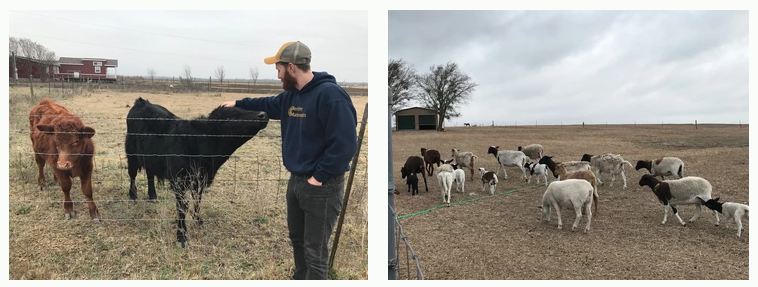
I grew enamored with having the simple lifestyle I had always imagined for myself. Chickens, a nice big garden, goats… We played around with the idea of buying land and living on a trailer or building our own house. We didn’t have a lot of money saved up so we started researching ways we could afford a house and build some equity.
I forget exactly how we found out about USDA loans – possibly through our realtor who had mentioned it or through Dusty’s research, but we suddenly realized it was totally conceivable to apply for a USDA loan and put $0 down to purchase a home. Even though we had some money saved, it would still be awesome to not spend that money if possible. This was around November/December 2017 I think and we immediately became obsessed with searching homes for sale and getting our realtor to take us to these houses out in the middle of nowhere. He probably thought we were crazy.
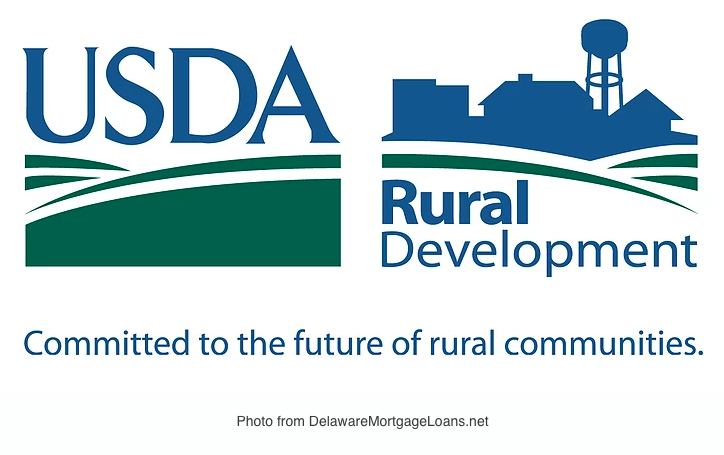
Tip #1
We quickly realized that at our price range, type and amount of land we wanted, the condition of the house we wanted, etc. That we were going to have to look at A LOT of homes. Any house that was even remotely livable, somewhat close to Austin (Dusty would still have to commute to Austin area for work), with land went FAST.
We had to look at a lot of reaaaally gross houses to appreciate the few gems we HAD seen. (I was so picky at first, thinking I would find a Joanna Gaines masterpiece) But by the time we were like “Oh, we actually really like that house.” it would be pending and off the market. So we both signed up for email notifications from Zillow and as soon as something remotely acceptable was posted we would go see it, even if it wasn’t 100% perfect. Oh, and 99% of the houses we saw were SO different in person. Pictures can be really deceiving in both good and bad ways. Some houses that were picture perfect were actually awful in real life – awkward plots of land, in way worse condition than it seemed… But then some houses we weren’t sure about in the photos were actually way nicer and more spacious than the photos led on. So, be sure to go see as many houses as you need to to get an idea of what you are up against!
Here’s some photos of homes we really loved and even put in offers on. All very affordable and on quite a bit of land (Gotta love Texas!):
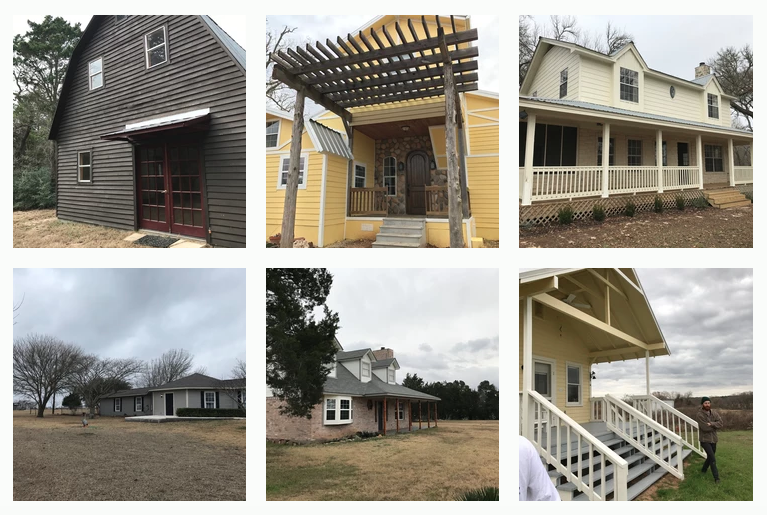
Which leads me to…
Tip #2
If you are looking for a house in a desirable area with kind of unique requirements, there isn’t really a ‘casually’ searching for a house to buy phase. We figured we would look at Zillow, see a cool house, wait until the next weekend to go see it, think an offer over for a few days, then buy a house. NOPE. It was like OMG this new house was posted! Call the realtor! We have to go see it TONIGHT! Then there would already be 4 other offers on the house.
So if you’re thinking of buying a house in a growing area, especially with land, especially if you are looking for something move-in-ready, you better be ready to put in an offer or else you might fall in love with something and before you blink it will be pending. We had to get super serious, super fast.
So back to the story, we really wanted to use a USDA loan because we certainly didn’t have enough money saved up to get a bank loan and put down a substantial amount. I’ll try to explain what a USDA loan is, and why it can’t be used everywhere. But, for a small homestead, it might be the perfect option. There are certainly more requirements and hoops to jump through for a USDA loan, but if you want to buy a house with $0 down, it was worth it in my opinion. You just have to know the requirements ahead of time so you don’t fall in love with a house then get crushed later on when you realize it won’t work for USDA.
A USDA loan is a loan guaranteed by the US Department of Agriculture to encourage home buyers to move into suburban or rural areas (mostly rural). These ‘rural areas’ (and in some case suburban) are determined by USDA through how the land is zoned, the population, etc. USDAloans.com has a map that covers some of the areas considered by the USDA to be eligible for their loan program. (There are a ton of good tools and resources on this website.)
If you are looking at a specific area and want to know, call your local USDA office and ask them if the area you are interested in is eligible. For us in Central TX, almost all the homes outside of Austin fell into this USDA eligible zone because of old zoning laws that hadn’t been changed. Even some properties we looked at that were relatively close to Austin were still eligible because no one had ever changed these properties from being considered ‘agricultural’ land or something. As I said, it seemed very vague to me what they considered and did not consider ‘rural’.
Since we decided this is something we were interested in pursuing, we decided to get prequalified for the loan so we had something to present to the sellers with our offers. To get prequalified for this USDA loan, we were put in contact with a local lending company that took all of Dusty’s information (income, credit, etc.) and input it into USDA’s eligibility website. This website is automated and will tell you if you are qualified or not. We had pretty good credit, so there wasn’t an issue, but there is no minimum credit score for this loan. If you have a low credit score, you can still be approved, there will just be some extra steps for them to approve you.
So once you yourselves have the USDA pre-qualification and/or a letter from your lender, you should know that not all homes, even in the proper USDA rural areas will be approved.

(I loved almost every house we looked at, as long as it had space for animals… Dusty had to reign me in!!! Haha)
Tip #3
Here are some other requirements that USDA wanted the homes to have in order to be considered.
*The property was a single-family home with no other guest houses or additional homes on the property. That was kind of a bummer because we would have loved to have a home with a guest house on it for our families or friends when they came to visit. But I think the reasoning is that USDA doesn’t want you renting out these additional structures for income. Not sure why they care, but again… vague reasoning. We found a house that had 2 ‘tiny’ homes on the 10 acres. It was a really unique property, but USDA would not have approved the loan for this property because of the 2 house issue. Barns, sheds, additional outhouses that aren’t used for living seemed to be ok though. Our house we ended up purchasing and using USDA on has 3 sheds on the property and an air conditioned workshop and the inspector had no issue with it.
*The house has to be in good condition. Once you are under contract on the house, an inspector will come out and check the house for USDA (this is separate from the appraisal an inspector will do to make sure the house is worth what the lenders will be paying). If you are looking for a ‘fixer-upper’ this type of loan WILL NOT work. The house has to be structurally sound, have a good roof, have working AC/heat, a proper electrical system, working plumbing, etc. We found an AWESOME property on 14 acres that was immaculate. It was an amazing hand-built cottage that utilized rainwater and had an incinerating toilet. So awesome. But USDA told us we could not buy a house without standard plumbing. It was a bummer, but had we known this information going into an offer, we wouldn’t have gotten our hopes crushed.
It’s worth mentioning too, that USDA will not give you a loan for an investment property- you must live in the house for at least a year.
Our house was built in 1987, in great condition, but there wasn’t a stove in the kitchen. Our USDA inspector made us install a stove before we could close on the house (weird little USDA hurdles, lol). So we bought a $50 stove, installed it, and the inspector came back out a couple days later to confirm we had done what he told us to.

*There are income caps – for example you can’t get a USDA loan if you (combined) are making more than a certain amount. This loan exists to encourage people to move to less densely populated areas and give people the opportunity to buy a house when they might not be able to buy one otherwise. But like I said above, if you want to buy a cheap fixer-upper property and renovate it, you’ll probably have to go a traditional bank-loan (or possibly FHA, but that’s a whole other possibility you could look into!) route unfortunately.
Tip #4
The hardest part of the USDA loan process for us, attempting to purchase a house in a fairly desirable area, was every house we put in an offer in had multiple offers. Which meant some people had cash, some people had bank loans with large chunks of money to put down. Even though we made offers over asking price, we were usually thrown to the bottom of the barrel because the sellers’ realtors weren’t familiar with USDA, figured it meant it would be a difficult and/or unfamiliar process, and basically told the sellers that it would be more of a guarantee that the deal would close with a traditional loan. It was incredibly frustrating for us because everything would go perfectly, we would put in our offer on a house we loved, then get rejected or offered to be a backup offer.
It’s really helpful to find a lender and a realtor to represent you that are knowledgable with the USDA process. That way when they are talking with the seller’s realtor, they can educate them and help them understand that it’s a legit loan. Sure there is the additional hurdle of having the USDA inspection, but as long as the house is in good condition there shouldn’t be an issue. Most of the time when we had an issue being rejected it was because the seller’s realtor wasn’t familiar with USDA and figured it would be a hassle.
Don’t get too discouraged though, because the house we ended up buying in April, we were the back-up offer on. We really connected with the sellers (HI BRITE AND SHERRI!…. They read the blog hahah) and it ended up working out in the end when the primary offer backed out. We are so thankful! Our house has been perfect for what we have wanted to accomplish and there are just enough little projects here and there for us to make it our own while still keeping it the way it has been for the past 30 years.
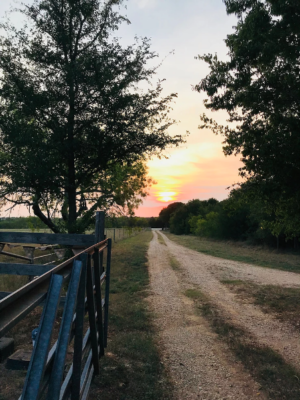
So I made it sound like we didn’t put a dime down to buy this house, but that isn’t the case. It was certainly less money we had to save up to do USDA, but there are still expenses. You will still have to pay for home inspections, repairs, etc. Unexpected things always happen.
For example, upon inspection prior to closing it was evident our septic tank needed to be patched. Unfortunately while they were trying to fix it, the whole wall of the septic collapsed, and we needed to replace the entire septic tank with a new one. We were able to work with the sellers (the best people!) to get some of that cost covered so we worked it out, but we did have to pay some of our closing costs (which usually you try to get bundled into the whole price of the house).
If you have the money saved and you want to look into going with a bank loan, you’ll obviously owe less to the bank overall and your principal will be lower. It really depends on your family’s situation, how much money you have saved up, and what type of property you are interested in purchasing.
Of course if you want to look into applying for a USDA loan, they will still look at your finances and make sure you have enough mortgage payments in your account as back-up, and its always good to have a 6 month emergency fund in case your AC blows up in the middle of summer or you lose your job.
Buying a house is a complicated and stressful process, I won’t lie. I hope this helps someone out there realize there are definitely options when buying a house! We thought we were crazy for buying a house because no one we knew that was our age had done it, but it was totally doable!
Please feel free to ask us questions. There are so many details I have probably left out and I didn’t even get into mentioning different types of tax exemptions you can apply for that will reduce your mortgage also. That’s a whole other blog post!!!
Thanks for listening, hope this helps!
Olivia & Dusty
